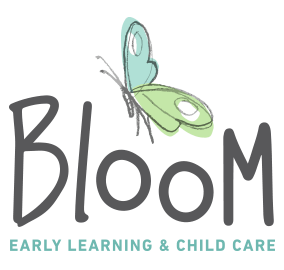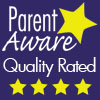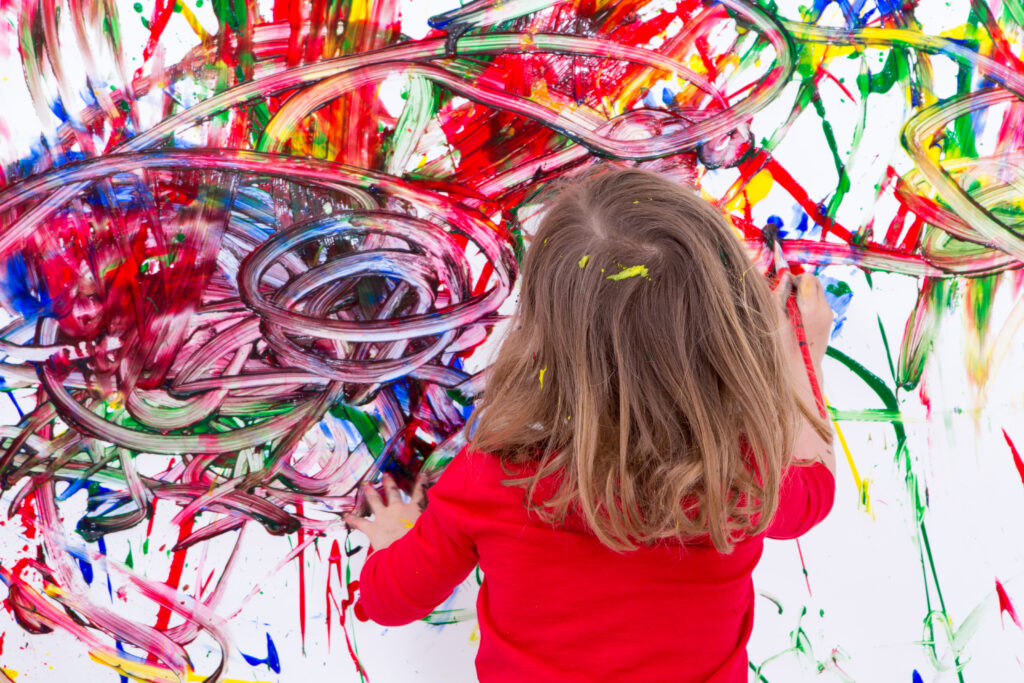 Are you excited about fostering children’s passion for lifelong learning? Are you ready to wear your dancing shoes or get messy with finger painting? Adults (related to or friends) with early-age children can encourage child development through play.
Are you excited about fostering children’s passion for lifelong learning? Are you ready to wear your dancing shoes or get messy with finger painting? Adults (related to or friends) with early-age children can encourage child development through play.
Child development experts say that children become more successful in life when they have a love for lifelong learning. And love for learning arises from play. Experiential learning can be an important part of the process, since children like the chance to participate in hands-on play and time to reflect on it. By boosting curiosity, skill development can occur more quickly, helping a child become better equipped for ongoing changes at school, the workplace and in life.
Adults provide the foundation for children’s early learning success. Sharing your time and giving children opportunities for creative learning are key. Through engaging in creative play, you can strengthen the bond the two of you already have. For more details, visit stages of play by Pathways.org.
We encourage adults to engage in fun activities with children that impact children’s development. (Here we focus on children older than 1-year old.)
7 Great Parenting Tips (which other adults can use)
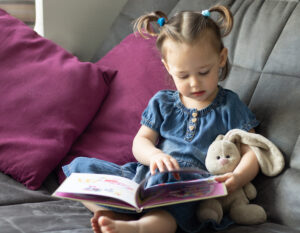 1. Ready to Read. Early-age children can find excitement and fun when you read to them. Consider attending a story hour or special event featuring story time. Match children’s interest to books, obtaining children their own library card. At Bloom Early Learning & Child Care (Bloom), a birthday celebration took place for Dr. Seuss, author of renowned books such as “Cat in the Hat,” and “Ham and Green Eggs.” The “Cat in the Hat” character read Dr. Seuss books, danced and sang with the children. Reading to children helps them build language, social, emotional and thinking skills.
1. Ready to Read. Early-age children can find excitement and fun when you read to them. Consider attending a story hour or special event featuring story time. Match children’s interest to books, obtaining children their own library card. At Bloom Early Learning & Child Care (Bloom), a birthday celebration took place for Dr. Seuss, author of renowned books such as “Cat in the Hat,” and “Ham and Green Eggs.” The “Cat in the Hat” character read Dr. Seuss books, danced and sang with the children. Reading to children helps them build language, social, emotional and thinking skills.
2. B is for Building. Kids love to explore materials they can build with. Think of engaging projects that require items and toys you already have at home, can borrow or are available to the public. Children can use their imagination to build all kinds of structures using educational toys such as blocks, Legos and other building toys. Help children build sandcastles or other towers at the beach or in the sandbox.
3. Creative Play. Child-led and child-created play is called creative play. Enthusiasm for singing, dancing, drawing, coloring and painting can bring out children’s creativity. Early-age children’s art work could be displayed in a specific part of their house. Praise children for their project. A child should be encouraged to explore activities without negative feedback or anxiety about making errors.
4. Consider Contests. Kids can learn about competition in a fun and exciting manner by entering an age-appropriate contest. For example, Minneapolis Moline Collectors have held coloring contests while ActivityHero’s have sponsored art contests. Children can bubble over with excitement from entering a contest, win or lose.April 2023 Infant Notes County Road 6.
5. Expand Exploration. Think about using materials such as boxes, paint, and yarn to make new objects or assign new uses and meaning. For example, at Bloom, early-age children have fun with Kitchen exploration, helping to bake delicious cookies by learning skills such as measuring and mixing ingredients. While they explore the kitchen, perhaps more importantly, they learn about sharing with other children and inclusivity.
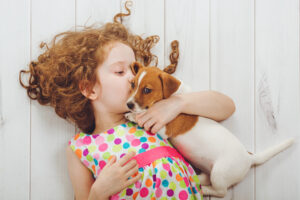 6. Pets for Pick Me Up. Children learn how to properly handle pets and build social skills. during Pet Day at Bloom. Recently, Children brought in their pets for “show and tell,” talking about animals that typically live at home, and giving the children the chance to see and hear about their pals’ pets – what they ate, what tricks the pets knew, and amusing activities shared with their pet. Children learned skills such as expanding their vocabulary and ways to safely behave with pets, while having an awesome time.
6. Pets for Pick Me Up. Children learn how to properly handle pets and build social skills. during Pet Day at Bloom. Recently, Children brought in their pets for “show and tell,” talking about animals that typically live at home, and giving the children the chance to see and hear about their pals’ pets – what they ate, what tricks the pets knew, and amusing activities shared with their pet. Children learned skills such as expanding their vocabulary and ways to safely behave with pets, while having an awesome time.
7. Get Out the Games. Have a terrific time playing indoor and outdoor games. Some children’s favorites are word games, games with balls, pretend (role playing), games in water, putting together puzzles and making bubbles. A few other examples: They learn sorting, comparing, and learning letters with flash cards, which can be made by cutting shapes from paper. Kids like board games which can help them identify numbers or letters.
 Early-Age Learning Centers As a Resource for Adults
Early-Age Learning Centers As a Resource for Adults
Many of the activities we’ve recommended are part of the preschool curriculum used at Bloom. Bloom preschool teachers help parents and other adults explore more ways for children’s success.
“It’s magical to watch kids learn,” said Rachelle Holm, executive director at Bloom. “Children learn through play. That includes critical life skills like empathy and development of social and emotional competence. These are key areas of learning.”
It takes a little effort and a lot of love to help children develop a love for learning. Remember to ask a lot of questions, praise kids by offering specific feedback about their effort, process and strategy used in completing the work; encourage mistakes; encourage creativity; and apply academic readiness to the outside world.
Resources
For details, visit 6 Ways to Foster a Love for Learning by Ojus Patel.
For more information about play, visit the National Association for the Education of Young Children and click here.
“6 Ways to Foster a Love for Learning” by Ojus Patel was completed in partnership with Kiddie Academy Educational Child Care, and The Everymom, but all of the opinions within are those of The Everymom editorial board.
Contact a child’s teacher for more ways to foster a child’s love for learning. Learn more about Bloom and how you can support us.
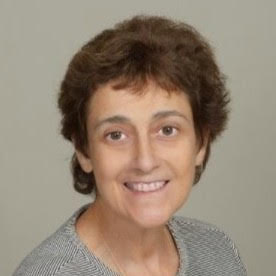
Irene Connors donates her time grant writing and blogging for social service agencies. She served as an information officer/communications specialist for most of her career at the Minnesota Department of Employment and Economic Development (DEED). In addition, she had a role in the Workforce Development unit in which she assisted job seekers find meaningful careers. Prior to joining DEED, she was employed at Allina Health as a communications coordinator and as an economist at the U.S. Department of Labor in Washington, D.C. She earned a bachelor’s degree from the University of Virginia and completed graduate work in professional communication at the University of St. Thomas (Twin Cities).
